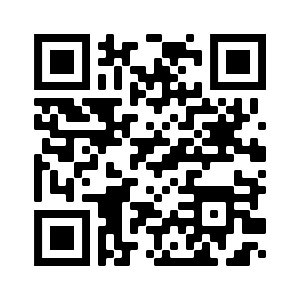PUZZLE-BASED LEARNING TO ENHANCE BODY PARTS KNOWLEDGE IN SECOND-GRADE STUDENTS WITH INTELLECTUAL DISABILITIES AT SLB NEGERI KARANGANYAR
Abstract
Special schools are educational institutions specifically designed for students with intellectual disabilities. Students with intellectual disabilities are often referred to as children with special needs who experience limitations in their cognitive abilities ranging from mild to severe. This study aims to determine whether puzzle-based learning can enhance knowledge about body parts in second-grade mentally disabled children at SLB Negeri Karanganyar. The research approach used is quantitative saturation sampling. Data collection for the research used a written test instrument with a total of 11 multiple-choice questions. The data analysis technique used to test the research hypothesis is the Wilcoxon Sign Rank Test. The results of this study show an increase in students' scores from 56.67 in the pretest to 83.33 in the posttest. The conclusion of this study is that puzzle-based learning games have an impact on improving knowledge about body parts for second-grade students with intellectual disabilities at SLB Negeri Karanganyar.
Keywords
Full Text:
PDFReferences
American Psychological Association. (2020). Publication manual of the American Psychological Association (7th ed.). American Psychological Association.
Ariadi, S., & Supriyono, H. S. T. (2017). Edugame pengenalan bagian-bagian tubuh manusia dengan tiga bahasa berbasis android (Doctoral dissertation, Universitas Muhammadiyah Surakarta).
Ayu, S. (2014). Segudang game edukatif mengajar. Diva Press.
Bahar, B., & Risnawati, R. (2019). Pengaruh penggunaan media puzzle terhadap hasil belajar matematika siswa kelas III SD di Kabupaten Gowa. Publikasi Pendidikan, 9(1), 77–86.
Creswell, J. W. (2014). Research design: Qualitative, quantitative, and mixed methods approaches (4th ed.). Sage Publications.
Desiningrum, D. R. (2017). Psikologi anak berkebutuhan khusus.
Field, A. (2018). Discovering statistics using IBM SPSS statistics (5th ed.). Sage.
Indonesia. (1999). Undang-Undang Nomor 39 Tahun 1999 tentang Hak Asasi Manusia. Lembaran Negara RI Tahun 1999 Nomor 165, Tambahan Lembaran RI Nomor 3886. Sekretariat Negara.
Isyani, & Esser, B. N. L. (2017). Pengaruh latihan model bermain terhadap kemampuan melempar bola dalam permainan bocce pada anak tunagrahita. Jurnal Kependidikan: Jurnal Hasil Penelitian Dan Kajian Kepustakaan Di Bidang Pendidikan, Pengajaran Dan Pembelajaran, 3(2), 256–261. https://doi.org/10.33394/jk.v3i2.570
Kauffman, J. M., & Hallahan, D. P. (Eds.). (2011). Handbook of special education. Routledge.
Kusumaningrum, F. (2015). Efektivitas media flashcard terhadap kemampuan mengenal anggota tubuh manusia pada anak autis kelas 2 SD di Sekolah Khusus Autis Bina Anggita Yogyakarta. Universitas Negeri Yogyakarta.
Maulida, A., & Zulfitria, Z. (2018). Pengembangan kecerdasan interpersonal anak autis melalui pemanfaatan media puzzle pada siswa kelas 2 sekolah dasar. Holistika: Jurnal Ilmiah PGSD, 1(2).
Palinkas, L. A., Horwitz, S. M., Green, C. A., Wisdom, J. P., Duan, N., & Hoagwood, K. (2015). Purposeful sampling for qualitative data collection and analysis in mixed method implementation research. Administration and Policy in Mental Health and Mental Health Services Research, 42(5), 533–544. https://doi.org/10.1007/s10488-013-0528-y
Prima, A. (2016). Aneka permainan kreatif dan edukatif untuk anak. Diva Press.
Safitri, I., & Suwartini, I. (2021). Pemanfaatan media puzzle sebagai media pembelajaran dongeng. Seminar Nasional Pengenalan Lapangan Persekolahan UAD.
Sari, L., & Masitoh, S. (2019). Model pembelajaran langsung bermedia tiga dimensi terhadap hasil belajar IPA pada anak tunagrahita. Jurnal Universitas Negeri Surabaya, 12(2), 1–16.
Shin, H., Sutherland, K. S., Shin, S. Q., & Conroy, M. A. (2020). Effects of technology-enhanced interventions for students with intellectual disabilities: A meta-analysis. Exceptional Children, 86(3), 305–325. https://doi.org/10.1177/0014402919887164
Sufi, L. F. (2016). Meningkatkan kemampuan komunikasi matematis siswa melalui model pembelajaran problem-based learning.
Supena, A. (2015). Pengantar pendidikan anak berkebutuhan khusus. Lembaga Pengembangan Pendidikan Universitas Negeri Jakarta.
Tilong, A. D. (2016). 49 aktivitas pendokrak kinerja otak kanan & kiri anak. Laksana.
Zigmond, N., & Kloo, A. (2017). General and special education inclusion in an age of change: Impact on students with disabilities. Advances in Learning and Behavioral Disabilities, 30, 1–24. https://doi.org/10.1108/S0735-004X20170000030001
DOI: https://doi.org/10.20961/jod.v4i2.95474
Refbacks
- There are currently no refbacks.
Copyright (c) 2025 Muhammad Hamdany Munawwa

This work is licensed under a Creative Commons Attribution 4.0 International License.
|









2.png)
